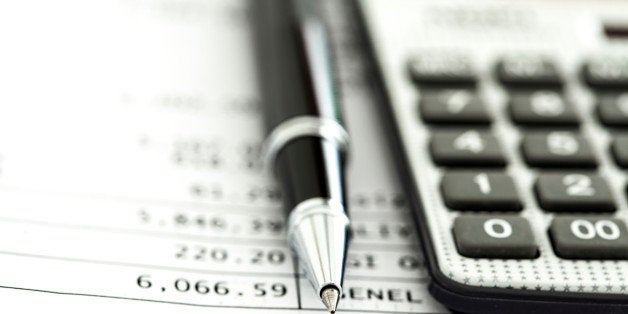
You have a product or service that's in-demand. You do great work, customers pay you to do that work, they're delighted with the result -- that's all there is to running a business, right?
Unfortunately, as a business owner, you know better. There are a never-ending number of little complications and to-dos that make owning a business so much more complicated than we feel like it should be. And chief among those is filing quarterly taxes with the IRS.
Most businesses--whether independent self-employed individuals, partnerships, or corporations--who operate in the U.S. are required to file quarterly taxes and make estimated payments to the IRS. This process involves precious time spent mining through paperwork, and even a little predicting the future! (Your future revenue, that is.)
Filing quarterly taxes is an unavoidable reality of running a business--but there are a few things you can do to make the process less burdensome. Follow these steps to make filing quarterly estimated taxes a little bit easier.
Determine Whether You Need to Pay Estimated Taxes
Does every business really need to file quarterly estimated taxes? Well, not necessarily. If your business is very young or you have very little revenue, you might not be required to make payments just yet. Here are a few basic guidelines to help you decide:
- You likely do need to file quarterly estimated taxes if you are filing as a sole proprietor, partner, S corporation shareholder, and/or a self-employed individual and expect to owe1,000 or more. Same goes for corporations that expect to owe500 or more, as well as anyone who had a tax liability in the prior year.
Still not sure whether you need to file quarterly taxes? Talk to an accountant or trusted financial advisor about the specifics of your situation.
For the rest of us, here's how to simplify the process:
1. Create a Separate Account For Your Tax Payments
The only thing worse than staring at money in the bank that you can't spend is accidentally spending cash that needed to go to the IRS.
To avoid both of these scenarios, consider creating a separate bank account for your tax payments--then build in a system where you automatically move over 30% of your revenue into this account as soon as it's received.
Essentially you're setting up your own IRS withholding system, just like you'd have as an employee. This way, when it comes time to make your estimated payment, you'll know the cash is on hand, and you won't have to endure the pain of watching those dollars leave your main bank account.
2. Take Advantage of Tools
Your business accounting software might have a built in function to help you calculate your quarterly estimated taxes. If not, use a tax automation program like TurboTax or TaxACT to simplify the calculations.
Instead of breaking out your calculator and weeding through complicated IRS forms, these programs will ask you a series of simple questions about your business, then do the rest of your calculations for you.
Of course, what these programs offer in efficiency, they might make up for in other limitations. If you have a unique business model or tax considerations that aren't included in the software's standard calculations, you may need to consult an accountant or do your own heavy lifting.
3. Choose the Right IRS Form to Manually Calculate Payments
Using accounting and tax automation tools will certainly make filing your quarterly taxes simpler. But if you're more of the pen and paper type, you do have the option of using the IRS's forms to manually calculate your estimated payments.
If you're filing as a sole proprietor, partner, S corporation shareholder and/or a self-employed individual, you'll use Form 1040-ES, Estimated Tax for Individuals. To file as a corporation, use Form 1120-W, Estimated Tax for Corporations.
Both forms have extensive instructions about calculations, withholdings, and any other factors that might impact your estimated payments--so even if you just have questions about how your accounting software is calculating your payments, you can find many of your answers there.
4. Enroll in the Electronic Federal Tax Payment System
Gone are the days of printed payment stubs and IRS checks in the mail. If you haven't already, enroll in the Electronic Federal Tax Payment System (EFTPS) to simplify your filing process.
If you're signing up for the first time, you'll need some lead time (about 1-2 weeks) to enroll and receive a PIN via snail mail before you can log in to add your payment information. But once you've completed this step, you'll be able to calculate and set-up automated drafts for all four of your quarterly payments at once.
5. Use Annualized Payments for Seasonal Businesses
Seasonal businesses can sometimes have a hard time making quarterly estimated payments. After all, it's hard to have cash on hand for taxes if you haven't actually earned any revenue yet. If you're filing taxes for a seasonal business, the IRS offers an "annualized" payment method.
The annualized method allows you to pay a certain percentage of each quarter's earnings, rather than four equal payments. This way, you'll be making a much larger payment during your higher sales season, but won't have to come up with cash you don't have during the slower months.
6. Make Adjustments As Necessary
Automation tools, IRS forms, and your tax filings from last year will help you calculate your estimated payments--but what if you experience a sudden change in your business's income? Exponential growth may be great news for your business, but it also means you'll need to adjust your quarterly tax payments to reflect your new earnings.
If you think you may owe more in taxes than you originally estimated, update your quarterly payments to reflect 110% of last year's tax filing. This way, you can take advantage of safe harbor payments, meaning that even if you owe more than 110% of what you paid last year, you won't be penalized for the additional taxes not paid. You'll still have to pay the extra taxes, just not any penalties on top of that amount.
On the other hand, if you think you'll likely make less in revenue than last year, it's okay to reduce your quarterly payments--but do your best to pay at least 90% of the amount you paid last year. This will help you avoid heavier penalties if it turns out that you bring in more than you're expecting.
Unfortunately, filing quarterly taxes is just one of those annoying tasks that are part of being self-employed or owning a business. But if you follow these steps and take advantage of the tools and technology available, it doesn't need to be a major frustration.
